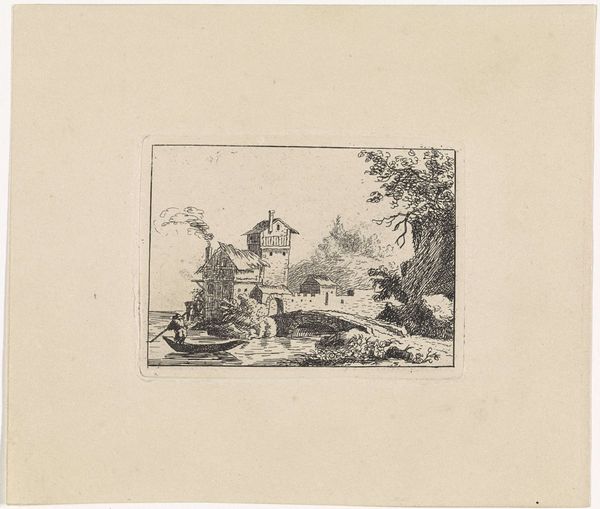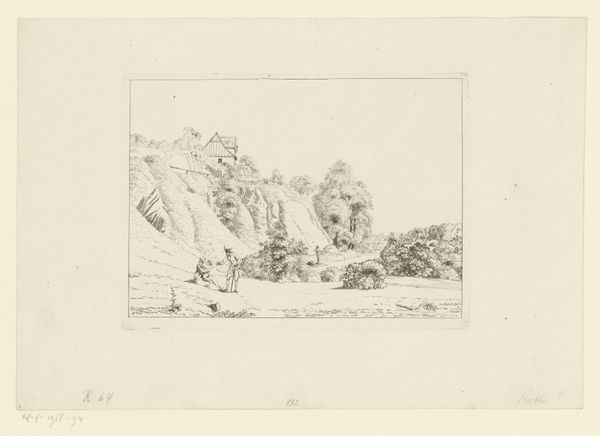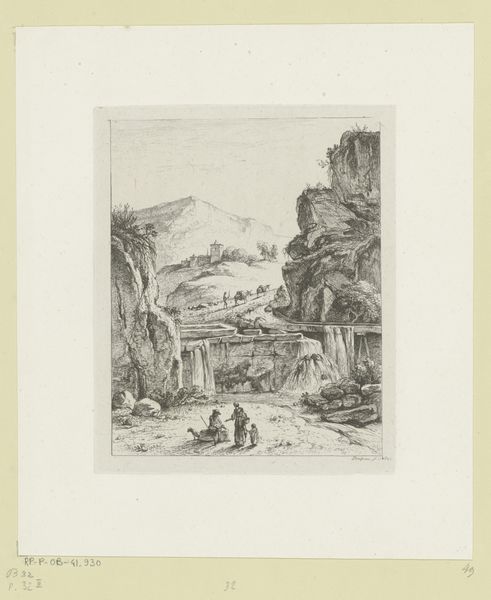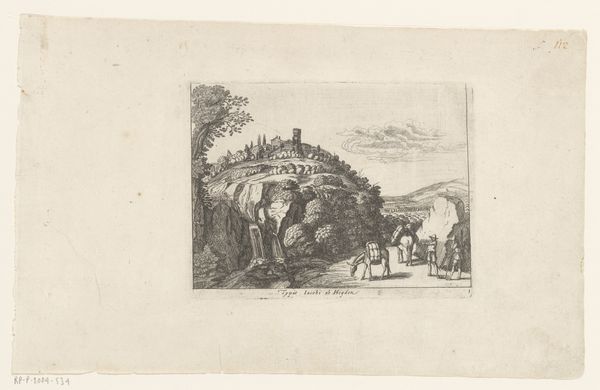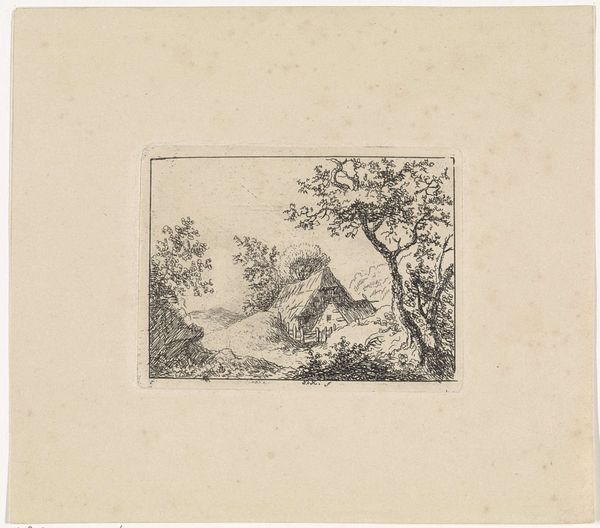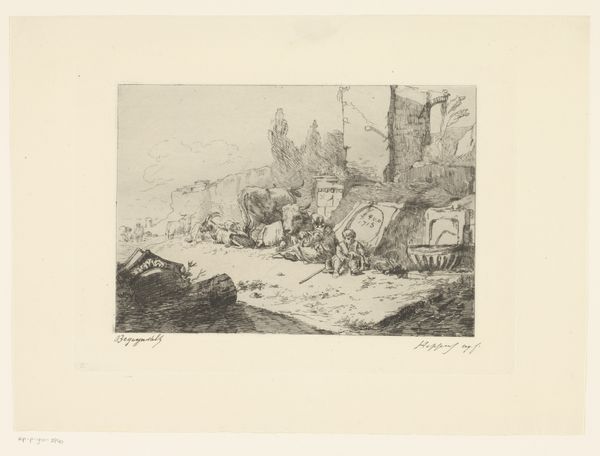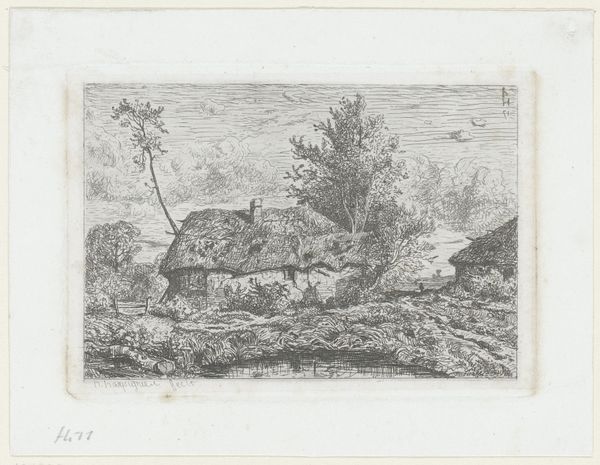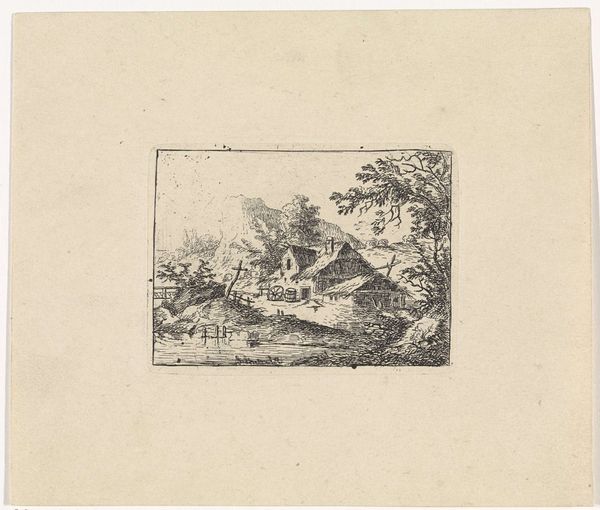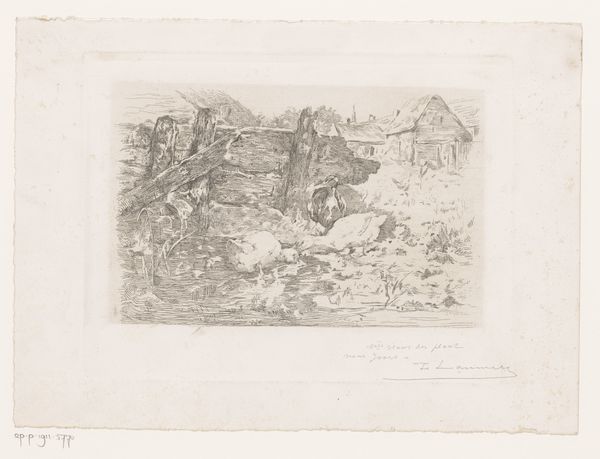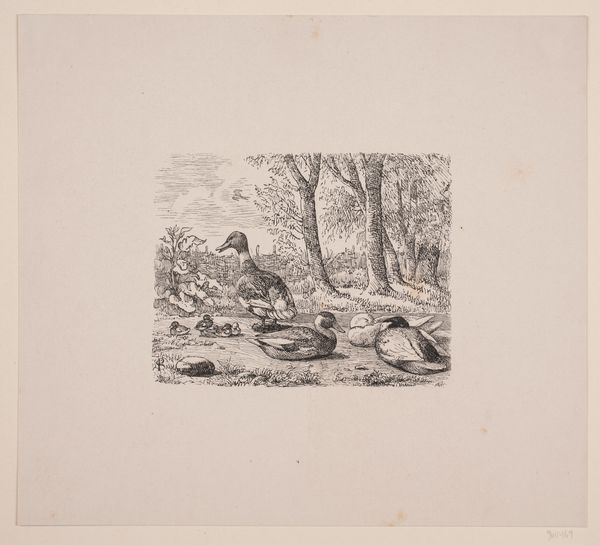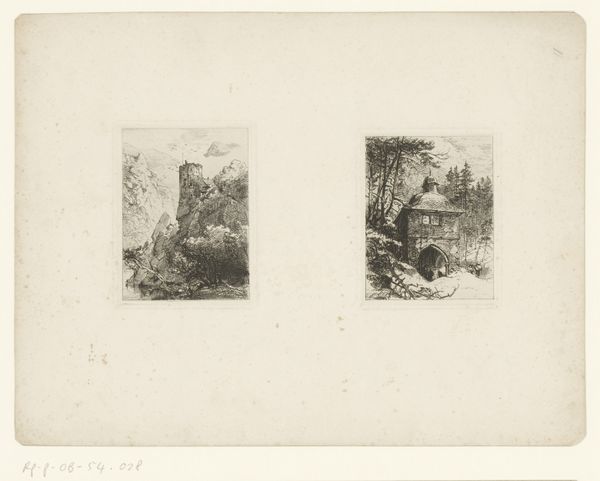
Landschap met een man op een ezel 1796 - 1856
0:00
0:00
drawing, print, etching, paper, pen
#
drawing
# print
#
etching
#
landscape
#
etching
#
figuration
#
paper
#
romanticism
#
pen
Dimensions: height 103 mm, width 105 mm
Copyright: Rijks Museum: Open Domain
This landscape with a man on a donkey was made by Reinierus Albertus Ludovicus baron van Isendoorn à Blois in the early 19th century using etching. Etching is an intricate intaglio printmaking technique which relies on corrosive liquids to produce lines in a metal plate. First, the metal plate is covered with a waxy, acid-resistant layer. The artist then scratches an image into the layer, exposing the metal. The plate is then submerged in acid, which bites into the exposed lines, leaving behind an image. The remaining layer is removed, and the plate is inked and pressed onto paper to create the print. The appeal of etching lies in its capacity to capture fine detail, subtle tonal variations, and the immediacy of the artist's hand. In this landscape, the baron used etching to create a highly detailed landscape, and the process suits his subject matter. The baron was interested in capturing the essence of the natural world. The marks created by the etching needle evoke a sense of spontaneity and freedom. By understanding the materials and making processes, we can appreciate the ways the artist brought landscapes to life through printmaking.
Comments
No comments
Be the first to comment and join the conversation on the ultimate creative platform.
